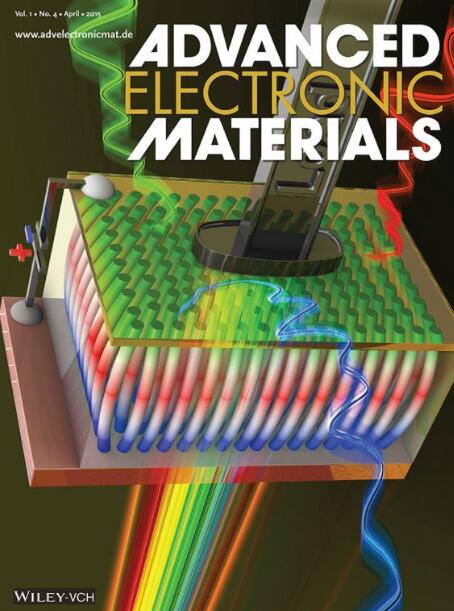理解和克服利用有机电子传输层的qled低效率
IF 5.3
2区 材料科学
Q2 MATERIALS SCIENCE, MULTIDISCIPLINARY
引用次数: 0
摘要
尽管有机材料与广泛使用的ZnO相比具有潜在的优势,但在量子点发光器件(qled)中使用有机材料作为电子传输层(etl)受到低于标准的外量子效率(EQE)的限制。这项工作调查了这个问题的根本原因和解决这些问题的方法。与预期相反,向空穴传输层(HTL)的电子泄漏被认为是限制这些器件效率的主要因素。通过使用包含电子阻塞接口的多层ETL配置,减少了电子泄漏,实现了更高的EQE。使用这种方法,绿色和红色发光QLED的最大EQE约为10%,这是未使用ZnO ETL的绿色QLED的最高报道,也是红色QLED的最高报道之一。对纯电子器件的测试以及瞬态电致发光测量表明,有机etl内电子空间电荷的形成可能有助于量子点层中的空穴注入,从而有助于减少泄漏。研究结果强调了层界面工程和泄漏控制对于在qled中实现更高的EQE的重要性,并提出了有效利用有机etl的策略。本文章由计算机程序翻译,如有差异,请以英文原文为准。
“Understanding and Overcoming the Poor Efficiency of QLEDs Utilizing Organic Electron Transport Layers”
Despite their potential advantages over widely used ZnO, the use of organic materials for the electron transport layers (ETLs) in quantum dot light-emitting devices (QLEDs) has been limited by subpar external quantum efficiency (EQE). This work investigates the root causes of this issue and approaches to address them. Contrary to expectations, electron leakage toward the hole transport layer (HTL) is identified as a plays a primary role in limiting the efficiency of these devices. By using a multilayer ETL configuration that includes electron blocking interfaces, electron leakage is reduced, and higher EQE is achieved. Using this approach, a max EQE of ≈10% in green- and red-emitting QLEDs, the highest reported for a green QLED not utilizing a ZnO ETL and among the highest in the case of red QLEDs, has been demonstrated. Tests on electron-only devices as well as transient electroluminescence measurements point to a mechanism where the formation of electron space charges within the organic ETLs may be assisting hole injection in the quantum dot layer, thus helping to reduce leakage. The findings highlight the importance of layer interface engineering and leakage control for achieving higher EQE in QLEDs, and present strategies for the effective utilization of organic ETLs in them.
求助全文
通过发布文献求助,成功后即可免费获取论文全文。
去求助
来源期刊

Advanced Electronic Materials
NANOSCIENCE & NANOTECHNOLOGYMATERIALS SCIE-MATERIALS SCIENCE, MULTIDISCIPLINARY
CiteScore
11.00
自引率
3.20%
发文量
433
期刊介绍:
Advanced Electronic Materials is an interdisciplinary forum for peer-reviewed, high-quality, high-impact research in the fields of materials science, physics, and engineering of electronic and magnetic materials. It includes research on physics and physical properties of electronic and magnetic materials, spintronics, electronics, device physics and engineering, micro- and nano-electromechanical systems, and organic electronics, in addition to fundamental research.
 求助内容:
求助内容: 应助结果提醒方式:
应助结果提醒方式:


